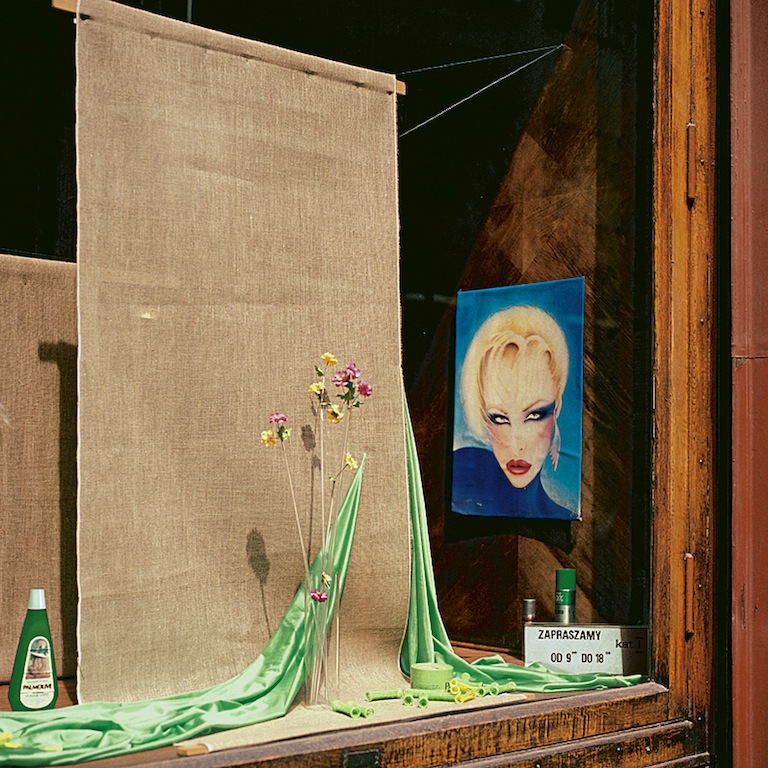
Beauty Salon, Kraków, Poland, by David Hlynsky, 1988
In the late 1980s, David Hlynsky, an American photographer living in Toronto, made repeated visits to Communist countries. In the streets of cities such as Prague, Warsaw, Moscow and Budapest, he shot around 8,000 pictures using a Hasselblad camera. The store windows struck him as particularly revealing and he decided to focus on documenting them; a selection can be seen in his book Window-Shopping Through the Iron Curtain, published earlier this year.
This beauty salon window, in Kraków in Poland, tells the familiar tale of scarcity in the Communist era. “Instead of advertising logos,” writes Hlynsky, “the windows were adorned with traditional yet incongruous signs of general cheer: paper flowers and butterflies, mushrooms, leaves, happy children.” The small sign with the hours of business invites customers in, and a plain bottle of Palmolive shampoo, a can of hairspray and a scattering of hair rollers make the promise of fine professional service. “Because of scarcity and inflation all commodities take on an iconic aspect,” writes Dick Hebdige. “The most mundane things are imbued with a significance and value.” The British cultural critic visited Kraków, Warsaw and Prague, and in 1989, wrote about the store windows in a sardonically titled essay, “Shopping-spree in Conran Hell”—a reference to the design guru and retailer Terence Conran.
As Hebdige also notes, some windows function as “surrealist texts,” and this is true of plenty of Hlynsky’s pictures, including this one. (Hlynsky says the displays can be considered as “still-life art projects,” but doesn’t pursue the Surrealist connection.) In the 1920s, the Surrealists were quick to identify the marvelous reverberations in Eugène Atget’s early 20th-century photographs of store windows in Paris. Where Surrealism was an inadvertent by-product of Atget’s encyclopaedic undertaking to taxonomize the whole of Paris, the Czechoslovakian Surrealist Jindřich Štyrský photographed curious window displays in the 1930s in full-throttle pursuit of the ineffable and uncanny.To deliver the full charge of psychic electricity, the window frame that defines the display as an alternative world must be visible in the picture. The Kraków beauty salon elaborates this cabinet-like appearance of enclosure with a deeply shadowed wooden side panel. Everything is in the foreground. Nothing of the day-to-day activities within can be seen. The artificial flowers, empty cloth backdrop, taut aerial strings and desultory emerald drapes consolidate the impression that we are observing interactions of ambiguous intention and outcome in a theater of objects. In place of the mannequin heads that often look surreal when framed by windows, the salon has a solitary painting showing a trendy hairstyle on offer inside, rather than the photographs used for this purpose in a western salon. With so little to see, the gaze of the ruby-lipped woman in heavy eye shadow is oddly confrontational.
See all Exposure columns

